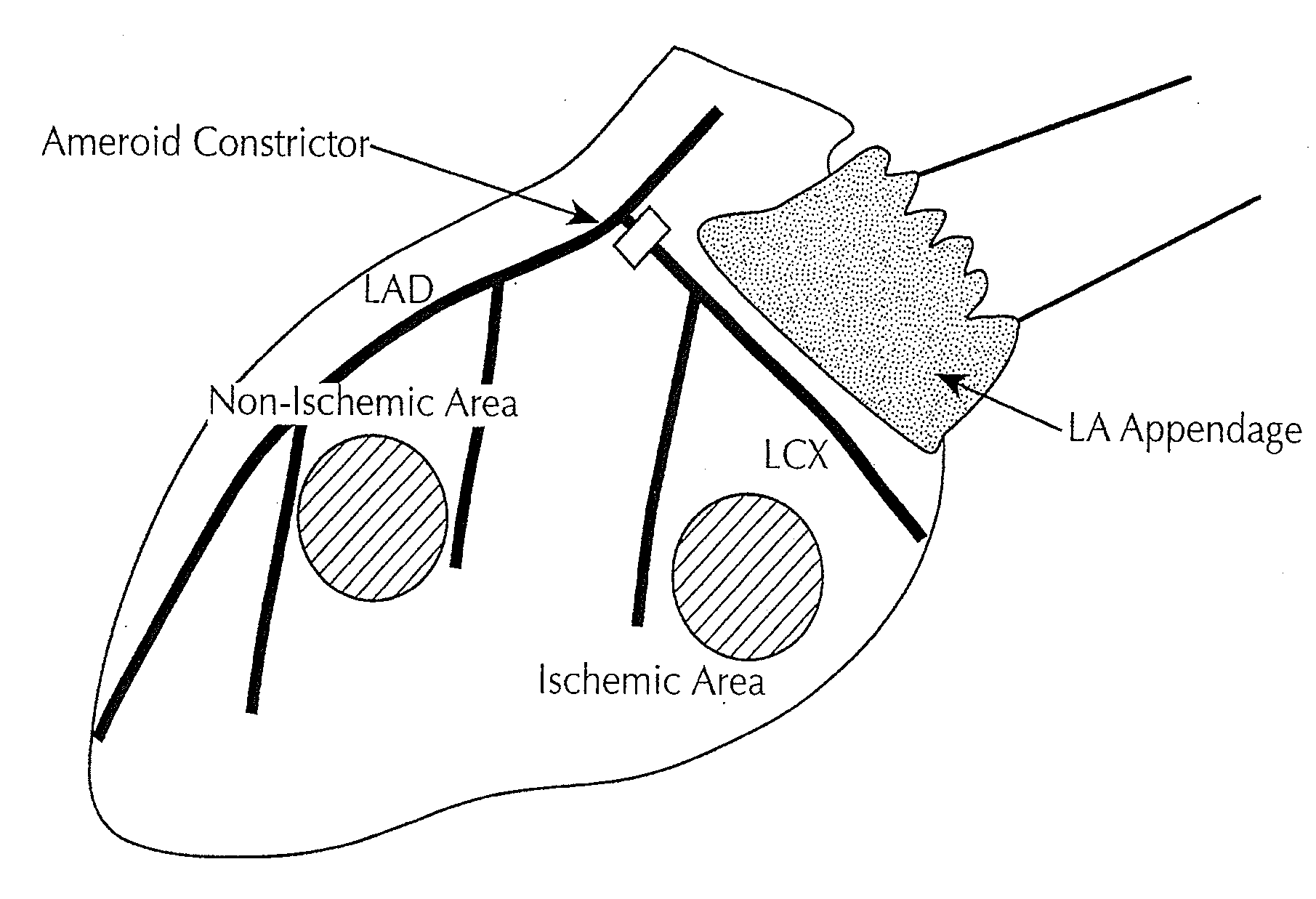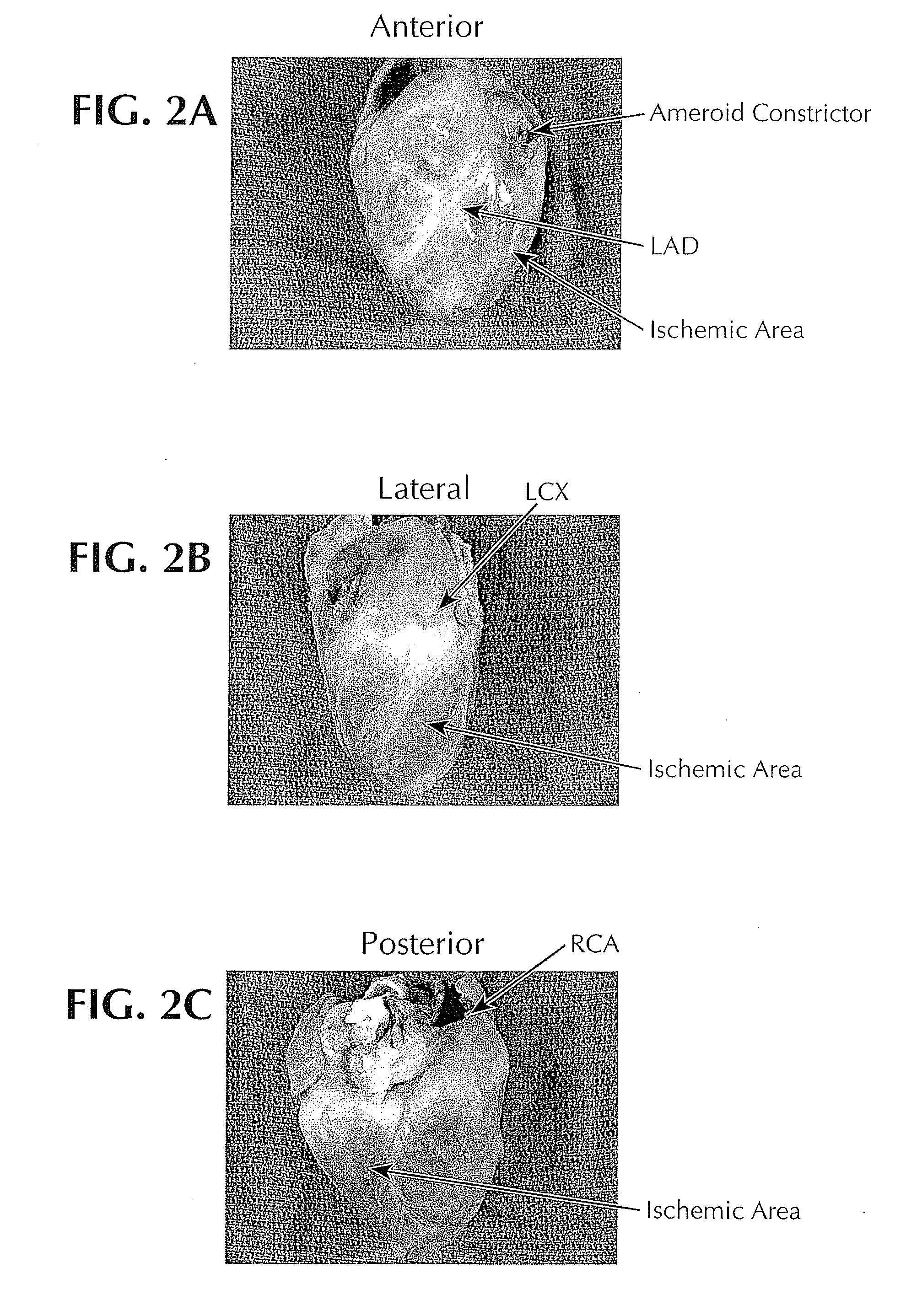Localized myocardial injection method for treating ischemic myocardium
a localized myocardial and ischemic myocardium technology, applied in the direction of dsdna viruses, drug compositions, peptide/protein ingredients, etc., can solve the problems of undesired side effects and dilution of therapeutic agents, and achieve the effects of increasing contractile function in the heart, promoting tissue regeneration, and increasing blood flow within the hear
- Summary
- Abstract
- Description
- Claims
- Application Information
AI Technical Summary
Benefits of technology
Problems solved by technology
Method used
Image
Examples
example 1
[0048]Induction of Chronic Myocardial Ischemia: Juvenile cross bred pigs (˜20-25 kg) underwent left lateral thoracotomy. An ameroid constrictor was placed around the proximal LCX just distal to the main stem of the left coronary artery using an ameroid constrictor matching the size of the vessel, typically 1.75, 2.00 or 2.25 mm inner diameter (ID). FIG. 1 illustrates placement of the ameroid constrictor.
[0049]Assessment of Cardiac Function and Myocardial Injections: Baseline measurements of cardiac function were obtained four weeks after placement of the ameroid constrictor. The measurements included coronary angiography, dobutamine stress echocardiography, blood flow measurements by injection of microspheres at rest and at atrial pacing of 180 beats per minute (bpm).
[0050]After baseline measurements were completed, vectors or saline were introduced into the heart in the indicated zones by intramyocardial injection as described in Kornowski et al. (2000) J. Am. Coll. Card. 35:1031-1...
example 2
[0054]Induction of Chronic Myocardial Ischemia: Ameroid constrictors were placed around the proximal LCX of juvenile pigs via left lateral thoracotomy as described in Example 1.
[0055]Assessment of Cardiac Function and Myocardial Injections: Baseline measurements of cardiac function were obtained four weeks after placement of the ameroid constrictor. The measurements included coronary angiography, dobutamine stress echocardiography, blood flow measurements by injection of fluorescent microspheres at rest and at atrial pacing of 180 beats per minute (bpm).
[0056]After baseline measurements were completed, vectors or saline were introduced into the heart by Stiletto injection catheter. Each animal received 10 injections, each 20 μL, of 5×109 pfu / mL of Ad-VEGF165 or Ad-βGal.
[0057]Four weeks after the injections, i.e., eight weeks after implantation of the ameroid constrictor, the baseline measurements were repeated. Additionally, ischemic and adjacent normal areas were harvested post-mor...
PUM
| Property | Measurement | Unit |
|---|---|---|
| time | aaaaa | aaaaa |
| inner diameter | aaaaa | aaaaa |
| inner diameter | aaaaa | aaaaa |
Abstract
Description
Claims
Application Information
 Login to View More
Login to View More - R&D
- Intellectual Property
- Life Sciences
- Materials
- Tech Scout
- Unparalleled Data Quality
- Higher Quality Content
- 60% Fewer Hallucinations
Browse by: Latest US Patents, China's latest patents, Technical Efficacy Thesaurus, Application Domain, Technology Topic, Popular Technical Reports.
© 2025 PatSnap. All rights reserved.Legal|Privacy policy|Modern Slavery Act Transparency Statement|Sitemap|About US| Contact US: help@patsnap.com



